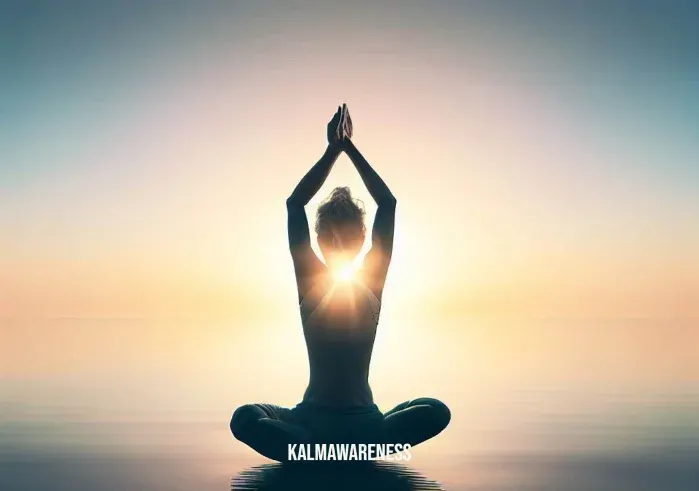The Yoga Pose Dragon
| Description | Explanation |
|---|---|
| Pose Name | Yoga Pose: The Dragon |
| Original Name | Yoga Pose: Vrikshasana |
| Difficulty Level | Intermediate |
| Pose Category | Standing Balance |
| Exercise Duration | Beginners: 30 seconds to 1 minute per side; Advanced: 1 to 2 minutes per side |
Yoga Pose: The Dragon, also known as Vrikshasana in traditional yoga, is a graceful standing balance posture that brings strength, flexibility, and focus to your practice. As you embody the powerful essence of the mythical dragon, you will feel a deep connection with the earth and an expansion of your inner self. In this article, we will explore the steps to master the Yoga Pose: The Dragon, unleashing your inner strength and serenity.
Step-by-Step Guide to Yoga Pose Dragon
- Starting Position: Begin by standing tall in Tadasana (Mountain Pose), with your arms at your sides and shoulders relaxed.
- Shift Your Weight: Shift your weight onto your left foot and engage your core for stability.
- Bend Your Right Knee: Lift your right foot off the ground and bend your knee towards your chest. Place your right foot against your inner left thigh or calf. Avoid placing the foot directly on the knee joint.
- Hands to Heart Center: Bring your palms together at your heart center in Namaste position. Find a focal point in front of you to enhance your balance.
- Lengthen Your Spine: Elongate your spine and draw your shoulders away from your ears. Maintain a steady and relaxed breath.
- Expand Your Wings: As you find balance, reach your arms overhead, extending them like the wings of a majestic dragon.
- Variation: Dragon Breath: For an added challenge and deeper stretch, inhale deeply as you lift your arms and exhale with a gentle sigh as you lower them.
- Hold Steady: Keep your gaze fixed on your focal point and breathe steadily as you hold the pose.
- Release the Pose: Lower your arms and gently lower your right foot back to the ground.
- Switch Sides: Shift your weight to your right foot and repeat the pose, bending your left knee and placing your left foot against your inner right thigh or calf.
Note: Beginners may find it helpful to practice The Dragon Pose near a wall or use a prop for balance until they gain confidence.
Benefits of Yoga Pose Dragon
- Strengthens: The Dragon Pose engages and tones the muscles of your legs, core, and shoulders.
- Improves Balance: This posture challenges your sense of balance and helps you develop focus and concentration.
- Hip Flexor Stretch: The bending of the knee and opening of the hips provide an excellent stretch for the hip flexors.
- Stress Reduction: Practicing this pose helps release tension and stress, promoting relaxation and mental clarity.
Precautions and Tips
- If you have a knee or ankle injury, avoid placing the foot against the joint and instead rest it on the inner calf or use a prop for support.
- Maintain a steady breath throughout the pose to stay centered and balanced.
- If you find it challenging to balance, focus on a fixed point or gaze softly at the floor in front of you.

The Dragon – Unleashing Inner Power
In the first part of our Yoga Pose journey, we delved into the graceful and powerful stance of Yoga Pose: The Dragon. Now, let’s explore further into the depths of this majestic pose and discover its profound benefits, understand who should approach it with caution, and explore exciting variations suitable for practitioners of all levels.
Benefits of Yoga Pose Dragon
Yoga Pose: The Dragon offers a myriad of physical, mental, and emotional benefits, making it a valuable addition to your yoga practice.
- Strength and Balance: Holding the pose requires engagement of the core muscles, legs, and stabilizing muscles. Regular practice enhances overall body strength and improves balance.
- Hip Flexor Stretch: The bending of the knee and opening of the hips provide an intense stretch for the hip flexors, which is particularly beneficial for those with sedentary lifestyles.
- Stress Reduction: Embodying the powerful dragon energy allows practitioners to release tension and stress, promoting relaxation and mental clarity.
- Improved Focus: Balancing in this pose requires concentration, helping to calm the mind and improve focus.
- Boosted Confidence: As you achieve stability and grace in The Dragon Pose, your self-confidence receives a significant boost.
Who Should Avoid Yoga Pose Dragon
While Yoga Pose: The Dragon is accessible to many practitioners, there are certain situations where caution is advised. The following individuals should avoid attempting this pose:
- Knee or Ankle Injuries: If you have a knee or ankle injury, it is essential to avoid placing the foot against the joint. Instead, rest the foot on the inner calf or use a prop for support.
- Balance Issues: Individuals with severe balance issues or vertigo should approach this pose with caution and consider practicing near a wall or with a support prop.
- Recent Surgery or Injuries: If you have had recent surgery or injuries, consult with a healthcare professional or a qualified yoga instructor before attempting this pose.
Variations of Yoga Pose Dragon
Modifications and variations allow practitioners of all levels to experience the essence of Yoga Pose: The Dragon. Here are some exciting variations to explore:
- Supported Dragon Pose: For beginners or individuals with balance issues, use a yoga block or a stable prop under the lifted foot to support and assist with balance.
- Floating Dragon: Advanced practitioners can attempt a floating variation, lifting the back leg off the ground entirely and extending it backward, parallel to the floor.
- Twisted Dragon: Introduce a gentle twist to the pose by placing the opposite elbow on the outside of the bent knee, deepening the hip stretch and engaging the core.
- Dynamic Dragon Flow: Flow in and out of the pose with your breath, moving from the standing position to the lifted pose, and back down, creating a fluid and meditative sequence.
The Magic of Yoga Pose Dragon
Yoga Pose: The Dragon represents not only strength and balance but also the fire within each practitioner. As you embody the dragon’s spirit, you tap into your inner power, igniting a sense of fearlessness and determination. Regular practice of this pose connects you with your deepest potential, allowing you to face life’s challenges with grace and poise.

The Dragon – A Journey Through Time and Spirit
In the previous chapters, we explored the physical and mental benefits of Yoga Pose: The Dragon, along with its variations and precautions. Now, let us embark on a journey through the history of this enchanting pose, discover its spiritual significance, and learn valuable tips to deepen our practice. Additionally, we will explore common mistakes to avoid and modifications for those with injuries or limited flexibility. Furthermore, we will explore poses that complement the essence of The Dragon, creating a harmonious flow within our yoga practice.
The History of Yoga Pose Dragon
Yoga has a rich history dating back thousands of years, and each pose carries a unique lineage. The exact origins of The Dragon Pose are shrouded in the mists of time, but it is believed to have its roots in ancient Indian and Chinese yoga traditions. The dragon has been a prominent symbol of strength, transformation, and protection in various cultures, and this pose pays homage to these attributes.
The Spiritual Significance of Yoga Pose Dragon
Beyond its physical benefits, Yoga Pose: The Dragon holds spiritual significance. In many cultures, the dragon symbolizes power, wisdom, and the untamed forces of nature. By assuming this pose, practitioners align themselves with the primal energy of the dragon, harnessing inner strength and courage. It also signifies the journey of transformation, reminding us of the constant cycles of change and growth we experience in life.
Tips for Getting the Most Out of Yoga Pose Dragon
To fully immerse yourself in the essence of The Dragon Pose, consider these tips:
- Focus on Breath: Connect your breath with your movements, inhaling as you lift your arms and exhaling as you lower them. Let your breath guide you in finding stability and balance.
- Mindful Gaze: Fix your gaze on a steady point in front of you to enhance concentration and steadiness in the pose.
- Warm-Up: Prepare your body with a gentle warm-up before attempting the pose, especially if you plan to hold it for an extended duration.
- Symmetry: Ensure you practice the pose on both sides to maintain balance and symmetry in your body.
Common Mistakes to Avoid in Yoga Pose Dragon
Avoid these common errors to prevent strain or injury:
- Overarching the Back: Keep your lower back in a neutral position to protect your spine.
- Collapsing Shoulders: Draw your shoulder blades down and back to maintain an open chest.
- Placing Foot on Knee: Avoid placing your foot on the knee joint to protect it from strain.
- Gripping Toes: Relax your toes and distribute the weight evenly through your foot.
Modifications for Injuries or Limited Flexibility
For those with injuries or limited flexibility, consider these modifications:
- Using a Prop: Hold onto a wall or a sturdy prop for support and balance.
- Bent Knee Variation: Instead of lifting the foot high, place the foot against the inner calf for a gentler stretch.
- Seated Variation: Practice a seated version of the pose if standing is challenging.
Poses Complementary to Yoga Pose Dragon
To enhance your practice, incorporate these complementary poses:
- Warrior Poses (Virabhadrasana I, II, and III): These poses empower and strengthen the legs and core, complementing The Dragon’s essence.
- Crescent Lunge (Anjaneyasana): Deepen the hip flexor stretch and open the chest with this pose, preparing your body for The Dragon.
- Tree Pose (Vrikshasana): Embrace the stability and balance of Tree Pose to build a strong foundation for The Dragon.





